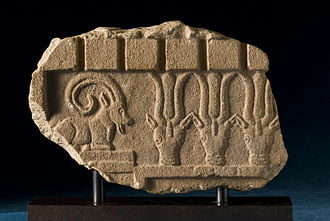Ethiopia, a nation with a profound historical and cultural legacy, stands as one of the most intriguing countries in Africa. Its rich past, marked by ancient kingdoms, religious transformations, and modern political shifts, provides a captivating narrative of resilience and heritage. In this blog post, we delve into the fascinating journey of Ethiopia from its ancient kingdoms to its contemporary state, shedding light on key historical milestones that shaped its identity.
1. Ancient Kingdoms: D’mt and Aksum

Ethiopia’s ancient history is adorned with the legacies of two significant kingdoms: D’mt and Aksum.
D’mt: A Pioneering Civilization
The kingdom of D’mt, flourishing around the 8th century BCE, is one of the earliest known civilizations in Ethiopia. Located in the northern region, D’mt is renowned for its sophisticated architectural achievements and expansive trade networks.
- Advanced Architecture: The people of D’mt constructed impressive buildings using stone, a testament to their architectural prowess. The remains of their palatial structures and temples reflect a high degree of craftsmanship.
- Trade Networks: D’mt played a crucial role in regional trade, engaging with neighboring civilizations. The kingdom was a hub for the exchange of goods such as gold, ivory, and frankincense, linking the Red Sea and the Nile Valley.
- Inscriptions and Language: The Sabaean script found in D’mt’s inscriptions indicates a strong cultural and linguistic connection with South Arabia, highlighting the kingdom’s role in facilitating cultural exchanges.
Aksum: The Apex of Ethiopian Civilization
The Kingdom of Aksum, emerging around the 1st century CE, represents the zenith of ancient Ethiopian civilization. Reaching its peak between the 4th and 7th centuries CE, Aksum was a formidable empire known for its monumental obelisks, robust trade connections, and religious transformations.
- Obelisks: Aksum is famed for its towering obelisks, some of which stand over 24 meters tall. These structures served as royal tomb markers and symbolize the kingdom’s architectural and engineering mastery.
- Trade Empire: Aksum’s strategic location facilitated trade with the Roman Empire, India, and beyond. The kingdom exported gold, ivory, and exotic animals, establishing itself as a major player in international commerce.
- Conversion to Christianity: Under King Ezana in the 4th century CE, Aksum embraced Christianity, becoming one of the first regions in the world to adopt the religion as the state faith. This monumental shift had a lasting impact on Ethiopia’s cultural and religious landscape.
2. The Rise of Christianity
The conversion of King Ezana to Christianity in the 4th century CE marked a significant turning point in Ethiopian history. This event not only altered the religious fabric of the kingdom but also positioned Ethiopia as a bastion of Christian faith in a predominantly Islamic region.
- Cultural Transformation: Christianity introduced new cultural and artistic expressions, evident in the construction of churches, the development of religious literature, and the integration of Christian symbols into Ethiopian art.
- Religious Influence: Ethiopia’s adoption of Christianity fostered a strong ecclesiastical tradition, with the Ethiopian Orthodox Church playing a pivotal role in the nation’s spiritual and social life. Monasticism thrived, and religious festivals became integral to Ethiopian culture.
3. Zagwe and Solomonic Dynasties
Following the decline of Aksum, Ethiopia witnessed the rise of the Zagwe and Solomonic dynasties, each contributing uniquely to the nation’s heritage.
Zagwe Dynasty: Architectural Marvels
The Zagwe Dynasty, ruling from the 10th to the 13th centuries, is celebrated for its remarkable architectural achievements, most notably the rock-hewn churches of Lalibela.
- Rock-Hewn Churches of Lalibela: Constructed in the 12th century, these monolithic churches, carved entirely out of rock, are considered a UNESCO World Heritage site. The churches were designed to symbolize a “New Jerusalem” and remain a significant pilgrimage site for Ethiopian Christians.
- Religious and Cultural Significance: The Zagwe kings were devout Christians, and their patronage of religious architecture and art helped sustain and propagate Christian traditions in Ethiopia during a period of Islamic expansion in neighboring regions.
Solomonic Dynasty: A Lineage of Legends
The Solomonic Dynasty, claiming descent from the union of King Solomon and the Queen of Sheba, ruled Ethiopia from the 13th century until the 20th century, with Emperor Haile Selassie being the last ruler from this lineage.
- Cultural Renaissance: The Solomonic rulers initiated a cultural and religious renaissance, emphasizing their divine right to rule and reinforcing the connection between the Ethiopian monarchy and biblical traditions.
- Architectural and Literary Flourishing: This period saw the construction of grand churches and monasteries, the flourishing of religious literature, and the preservation of Ethiopian heritage through manuscripts and oral traditions.
4. Modern History
Ethiopia’s journey through modern history is marked by significant political transformations and challenges, from the reign of Emperor Haile Selassie to the establishment of the Federal Democratic Republic of Ethiopia.
Haile Selassie: Modernization and Challenges
Emperor Haile Selassie, ruling from 1930 to 1974, is a central figure in modern Ethiopian history.
- Modernization Efforts: Haile Selassie embarked on ambitious modernization programs, including educational reforms, infrastructure development, and efforts to centralize and modernize the economy.
- Italian Invasion: Ethiopia faced significant challenges during his reign, notably the Italian invasion in 1935. Despite being occupied by Italy for five years, Ethiopia retained its sovereignty and became a symbol of resistance against colonialism.
- International Influence: Haile Selassie was instrumental in the establishment of the Organization of African Unity (OAU) in 1963, advocating for African unity and independence.
The Derg Regime: A Period of Turmoil
The overthrow of Haile Selassie in 1974 led to the rise of the Derg, a Marxist-Leninist military junta led by Mengistu Haile Mariam.
- Authoritarian Rule: The Derg regime is remembered for its authoritarian rule, marked by human rights abuses, political repression, and the infamous Red Terror campaign.
- Economic and Social Struggles: Ethiopia experienced severe economic challenges and social upheaval during this period, including famines and forced resettlement programs that had devastating effects on the population.
The Federal Democratic Republic of Ethiopia: A New Era
The fall of the Derg regime in 1991 paved the way for the establishment of the Federal Democratic Republic of Ethiopia, transitioning the nation to a federal system of governance.
- Multi-Ethnic Federalism: The new constitution adopted in 1994 established Ethiopia as a federal state composed of ethnically-based regions, aiming to address the diverse needs and aspirations of its multi-ethnic population.
- Economic Growth and Development: Since the 1990s, Ethiopia has seen significant economic growth, driven by agricultural development, infrastructure projects, and a focus on education and healthcare.
- Challenges and Progress: Despite facing challenges such as political instability and ethnic tensions, Ethiopia continues to make strides in various sectors, striving to achieve sustainable development and national unity.
Conclusion
Ethiopia’s history is a tapestry woven with ancient glory, religious transformation, and modern resilience. From the pioneering civilization of D’mt and the majestic kingdom of Aksum to the architectural marvels of the Zagwe Dynasty and the enduring legacy of the Solomonic rulers, Ethiopia’s past is a testament to its rich cultural heritage. In modern times, the nation has navigated through periods of turmoil and transformation, emerging as a resilient and forward-looking country. As we explore Ethiopia’s past, we honor the vibrant culture and enduring spirit of this remarkable nation, celebrating its contributions to human history and its continued journey towards a prosperous future.


